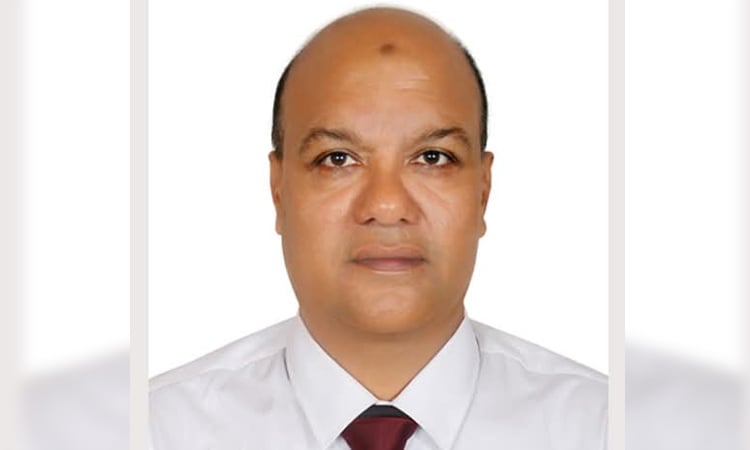News Flash
News Flash

MYMENSINGH, June 28, 2025 (BSS) - Director of Haor and Char Development
Institute of Bangladesh Agricultural University (BAU) Md. Abul Kalam Azad
today said a sustainable and profitable business model can be developed by
utilizing the vast potential of the country's haor and char areas where
agriculture-based startup activities are still very limited.
Based on field observations, farmer experiences and analysis of natural
resources, he told BSS about such an innovative initiative.
He discussed the sustainable startup plan "Haor Meet" while speaking on the
development of haor.
A startup is an entrepreneurial business venture that starts from scratch, he
said, adding: "In other words, starting work on a new idea, product or
service is called startup. Its main goal is to create large-scale customer
involvement in a new subject and build a sustainable business model based on
it."
As a result, new employment is created, customers get their desired products
easily and the number of entrepreneurs increases.
Despite the increase in the scope of e-commerce and supply chain-based
startups in the country, the number of agro-based technology-based
enterprises is still very low.
However, about 40 percent of the labor market is directly involved in
agriculture. Although farmers in the plains are somewhat safe during the
production season, farmers in the listed (inseparably connected) areas, such
as farmers in the haor and char areas, suffer the most losses.
Due to the weak communication system here and the violence of middlemen,
farmers lose interest in taking risks with new ideas.
To address these challenges, expansion of market management and
diversification of products are very important, Abul Kalam Azad said.
If farmers in the haor areas can be connected to the value-added chain, they
will be able to increase their income manifold, he remarked.
The haor area contributes 18 percent of the country's total Boro paddy
production, 20 percent of fish production and 22 percent of livestock
production, according to a report published by a daily newspaper (Samakal) on
March 22, 2025.
Currently, the dairy industry is quietly expanding in the char areas and is
becoming known as an important source of milk and dairy products in the
country.
He further said five-seven bathans arise in each haor, where natural green
grass grows after the monsoon water recedes in the area. This grass is
naturally used as grazing land. About 300-400 cows can be fattened in each
bathan.
Talking to farmers, it is known that although the initial price of a cow is
Taka 40-50 thousand, but it can be sold for Taka 120 thousand after six
months of rearing.
However, if more planned initiatives are taken, the profit can be doubled.
Highlighting the current situation in the haor, he said organized marketing
system, cooperative farmer society, concept of sales center, processing
center and cold storage system, concept of organic products, disaster warning
system, insurance policy, technology to ensure ownership certificate and
supply of safe drinking water is missing in the haor areas while natural
grass and pasture, cattle, readily available labour, local service providers
(LSP) and materials for building temporary sheds are available in haor.
Interventions on formation of farmer cooperatives, training and
demonstration, processing centres and cold storage facilities, application of
insurance policies, use of health check-up system, establishment of sales
points in cities, organic meat branding, scope for use in poultry and fish
sectors are needed during the off-season.
Regarding the livestock-based startup plan in Haor region, he said Haor area
is full of grass from mid-November to May. This grass is used as the main
food of the animals, due to which a large number of cattle from the
surrounding districts and upazilas are reared here.
Research has shown that about 70 percent of the cost of raising cattle is
spent on food. But the food expenditure of farmers in the haor is almost
zero. Farmers can raise a cow with only two maunds of paddy and Taka 1,000 in
six months and on an average a farmer rears 30-40 cows.
He further said in the startup business, first 30 cows will be raised in the
traditional way in the pastures of the haor and the cost of each cow will be
recorded.
During this time, a modern slaughterhouse and a chilling room will be set up.
If the cows are suitable for slaughter, they will be slaughtered in a modern
slaughterhouse and the chilled meat will be sent to the city. The brand of
this meat will be "Haor Meat".
In this process, the total cost and profit from raising cows to sell will be
determined and presented to the farmers. They will be interested in this and
form a community farmer's society, according to Azad's "Haor Meet".
"Members will be trained in modern farm management, scientific slaughtering
and meat processing. If necessary, they will be brought under the insurance
benefits," it said.
The Director of Haor and Char Development Institute of BAU further said that
if the startup business starts in this way, a major transformation will come
in the livestock sector in these haor areas, the standard of living of
farmers will improve, women will be empowered and new employment
opportunities will be created.
If this startup model is implemented in every haor and char areas of the
country, it will be possible to reduce protein deficiency, he hoped.
Using the same technology, farmers will also be able to benefit from
processing duck and fish during the monsoon season, he continued.
"A new business center centered on haor will be developed, which will help to
increase the country's GDP," he said, adding that the government's
cooperation, training, farmer selection and local government support are very
important in this initiative.